A Brief Note on Highs and lows
When you are traveling everything is intensified. The experience is a tantalizingly tumultuous process of condensing a vast array of novel experiences into a relatively short six days, six weeks , six months...and so on. As such, the highs are infinitely higher and the lows acutely deeper. You laugh longer, love harder, live faster. However, sometimes things happen and for a moment, before perspective and space lend a delicate hand, you think everything is ruined and absolutely nothing could be worse. The convoluted emotional time frame of travel makes the lows cut incredibly deep, but you find yourself picking up the pieces far quicker than expected. There are too many things to be grateful for. You are not at home. You are not bound to the routine of 9-5. You have countless novel experiences at your finger tips. In the very least, you are in a country where a quality bottle of Malbec costs under 5$. So it's really not all that bad.
Recently, we were robbed two times in 24 hours in a town that has a deceptive aroma of security: a picturesque mountain town straight out of a Swiss fairy tale with a Latin twist dipped in luxury. Had we researched this place a little more, perhaps we would have known driving with foreign plates was the equivalent of holding up a neon "Rob Me" sign. Had we not been overly relaxed, from 2 months of driving around Chile and Southern Patagonia where our van was safely left overnight while we hiked, perhaps things would have been different. As it stands, we did not know these things and lured into a false sense of security with the abundance of expensive chocolate shops and artesian breweries, we left our car briefly in broad day light and returned to find our window smashed and everything of value gone. Twice. The thieves were fast, slick and probably went on to rob plenty more tourists and unlucky civilians the same day. While in line to make a statement for the passive and unhelpful police, we met a couple who had their car robbed when it was parked but a block from the station. As I said, traveling intensifies everything. Losing cameras, computers and passports sucks the life out of you. However, one of the finest aspects of journeying is meeting other people and exchanging horror stories. Because chances are that the terrible thing which happened to you, happened to someone else as well. And somehow, that makes things more tolerable. It's not my place to wax poetic about whether or not we deserve to be robbed, even though the thieves probably assumed we are much wealthier than we actually are, because indeed, we are privileged enough to travel in the first place. There are only so many tears you can cry, or revenge fantasies you can entertain before you have to acknowledge that things are just things and with time, ( and thankfully, insurance money) can be replaced.
Naturally,losing the photos and videos is the most painful wound to nurse, and one that based on previous experience, will always sting a little. Having this blog has made the process harder and easier all at once. In a way, this project was a blessing: it has allowed us to salvage many of the pictures we took along the way in meaningful form. However, this has also cursed us with a sadness that reaches a little deeper than simply losing your camera in the middle of a vacation. Indeed, the experience of this trip is rather inextricably bound to our blog: we wanted to make something of our travels. We aimed to have our passion for travel collude with a passion project and when our primary means to create this was taken, a little bit of the heart of this adventure was too. Moreover, our little home was invaded and violated, and our safe adventure cocoon a little less secure. There is nothing pleasant about seeing your bed torn apart and covered in broken glass.
However, the speedy travel timeline to recovery is well under way. We are reevaluating our itinary and direction as we wait for official documents to be sent to us and that's not a bad thing. Half the fun in traveling is saying okay, screw the plan lets do this instead. This hasn't been the easiest trip but it has been indescribably rewarding and we wouldn´t do anything differently ( aside from leaving valuables in the car).While we morn the loss of our photos, the hours of film footage and the beautiful, never to be seen time-lapses, we are thankful for what we could save. All our photos from the striking Torres Del Paine national park are lost. Yet, that was but final piece of our venture into Southern Patagonia. We were able to save pictures from El Chalten, El Calafate and the infamous highway Ruta 40. While they lack the quality and resolution of those saved on the forsaken laptop, the beauty of this landscape more than compensates for the quality of those salvaged from our phones.
Without further ado, we present to you our adventures farther down south.
A Moment In...Southern Patagonia
From the few photos we have, I will attempt construct what was perhaps the most beautiful and enjoyable section of our travels thus far. It appears the farther south you drive the more stunning and wild things become. We began to cut our Patagonian teeth on the Carretera Austral, but nothing really prepares you for the jaw dropping sights of Fitz Roy or the Torres Del Paine jutting into the sky while the Patagonian wind whips around you with an incomprehensible force. Although we have not completed the trip yet, I have a strong feeling that Southern Patagonia will be the place we will yearn for the most when our feet are back to walking the familiar path back home. While our time there was a constant battle against the approaching winter with a huge wind chill factor, the scenery eclipsed even the coldest of days with jaw dropping wonder. The region is one that deserves far more time to explore than we gave it. In time ( and most definitely in summer), I believe we will return to do so. It is simply too beautiful not to.
Our adventures in Southern Patagonia can be broken down into the following three governing factors:
1) The endless flat Pampa
2) The startlingly sharp mountain peaks cutting into the sky
3) The Wind .... The relentless Patagonian Wind.
I begin with #3 as it thoroughly permeated the experiences of #1 and #2.
The Patagonian wind is something you first experience with senses other than touch, before it slams into you with incredible force and then it is a task to feel anything but the wind. First you hear it, a far off roar quickly escalating into a strange symphony of jet engine thunder, avalanche rumbles, accented by the sweet but shockingly swift rush through the tops of the swaying trees. You can see it too. Up on the mountains the wind is locked in a furious dance with the snow, whirling madly in ascending spirals that dazzle you until they whip you in the face, stinging like a thousand tiny daggers. Strong enough in fact, to rip the pegs out of the tent and flip it over with you sleeping inside. Talk about a rude awakening...
I digress.
Our first introduction to the wind happened the moment we crossed the border into Argentina and settled ourselves on the opposite side of Lago General Carrera , now called Lago Buenos Aires this side of the Andes. Falling asleep in our tin can of a car with the wind rattling around you with such force, such noise that in the dark you feel you are out at sea, mere minutes from capsizing. After that night we learned the importance of always parking next to some form of shelter, lest you want feel like you are sleeping in a blender. The wind did not abate when we awoke the next day, and it chased us with a ferocity for the rest of the day while we set out on the mercifully recently paved section of Ruta 40.
Here we return start of it all, factor #1: Driving Through Pampa on Ruta 40
Running from the northern tip of Argentina to the southernmost point, the highway is the longest in the country and one of the longest in the world. It has earned a reputation for being desolate and isolated: a lonely dirt road cutting into an empty landscape. In many ways, there is not much to be said about driving the highway. You pass few cars and the often the scenery does not change for hours. Yet driving it is an experience unlike others, and perhaps returning home to our populated freeways will seem dull in comparison.
Things we've learned driving Ruta 40 down South (and then back up again):
1) Our car is not aerodynamic whatsoever: a sudden gust will literally push us into the opposing lane.
2) There are very very few cars driving the Ruta 40 down south, but you better believe the force of a passing truck coupled with the force of the wind will knock your side view mirrors out of place.
3) The Pampa landscape - flat, sparsely vegetated desert- offers no buffers against the wind. Furthermore, driving through the Pampa becomes an exercise in staying sane for there will be hours the pass pedal to the floor on the highway and you will appear to have driven nowhere.
4) The original, unpaved Ruta 40 occasionally separates from the improved highway and winds along beside it. At one point on the drive we were diverted to the older highway and instead of feeling more authentic we thanked our lucky stars for pavement, as the original is scarcely big enough for one car and riddled with potholes and large stones embedded in hard mud.
5) In total we have driven roughly 2000 km so far on the Ruta 40, and every time we diverged from the flatlands to reunite with the mountains was more beautiful than the last.


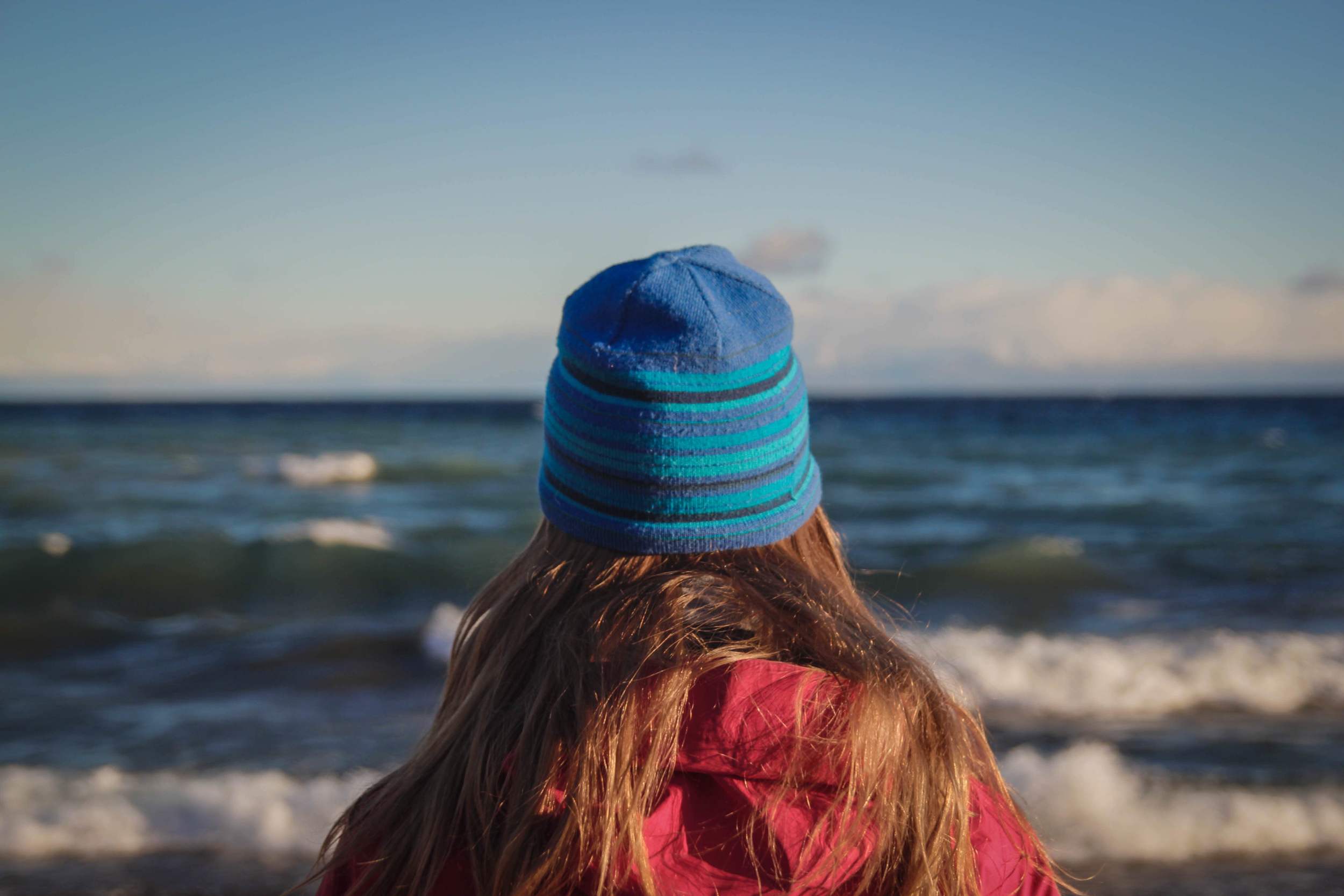
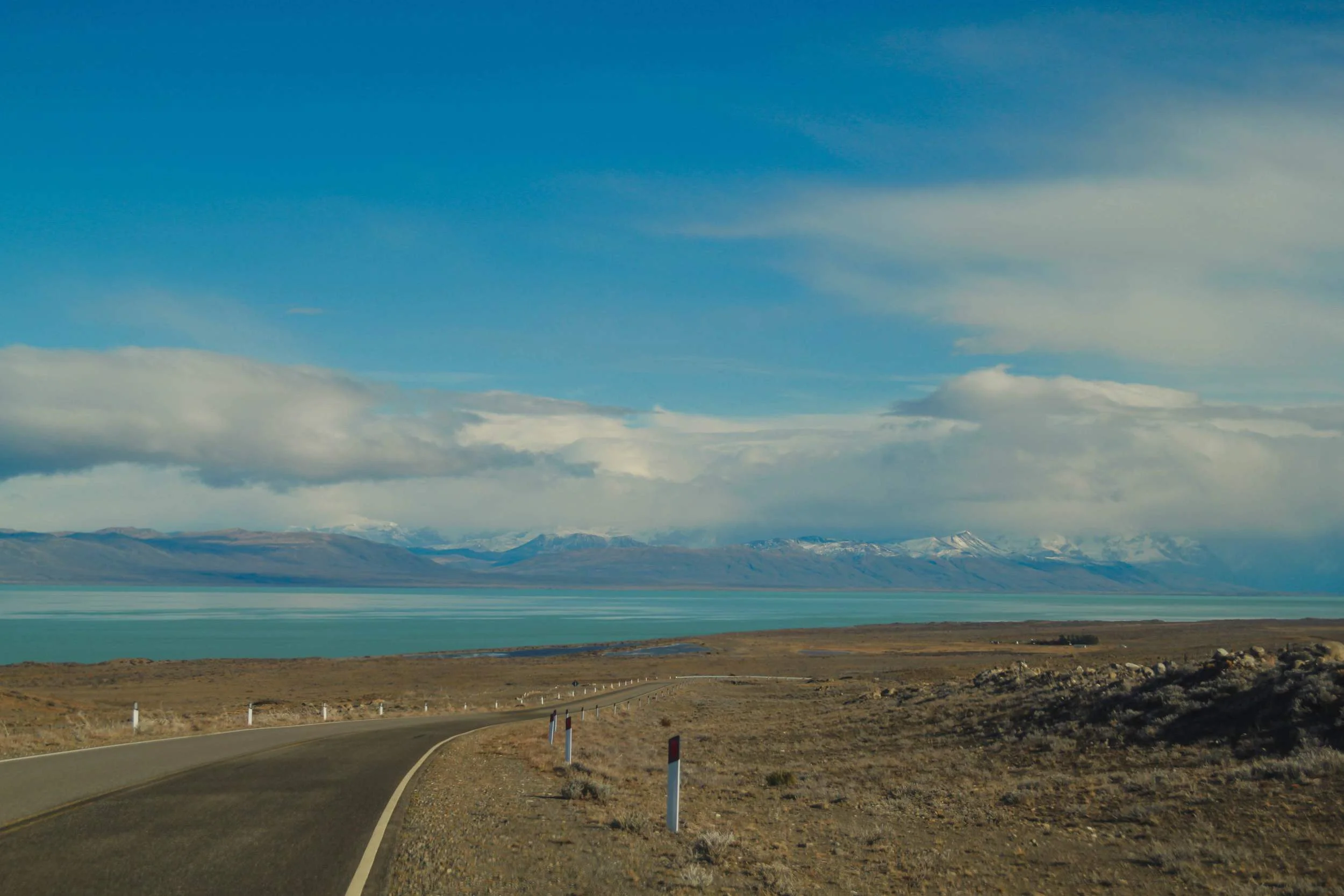
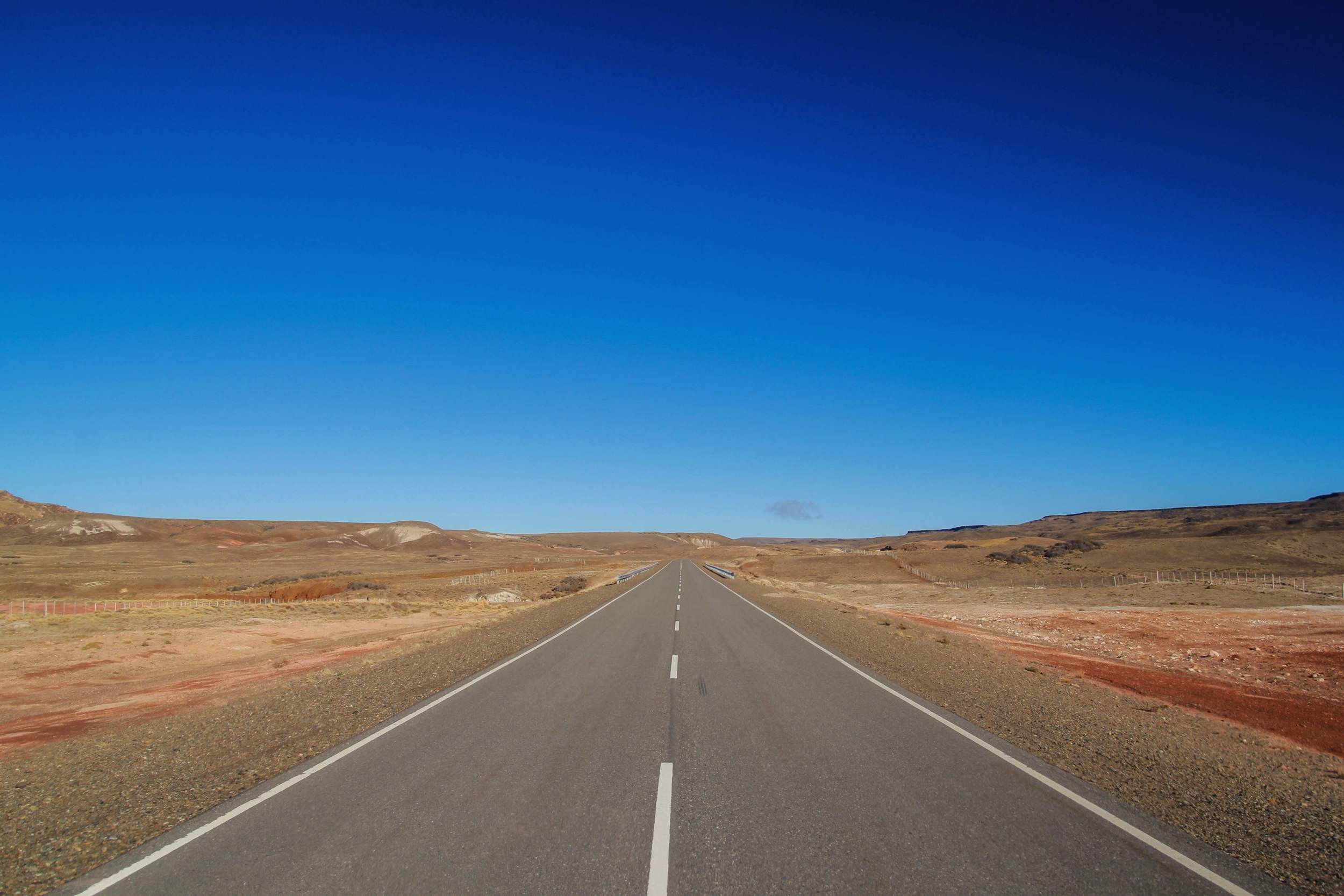
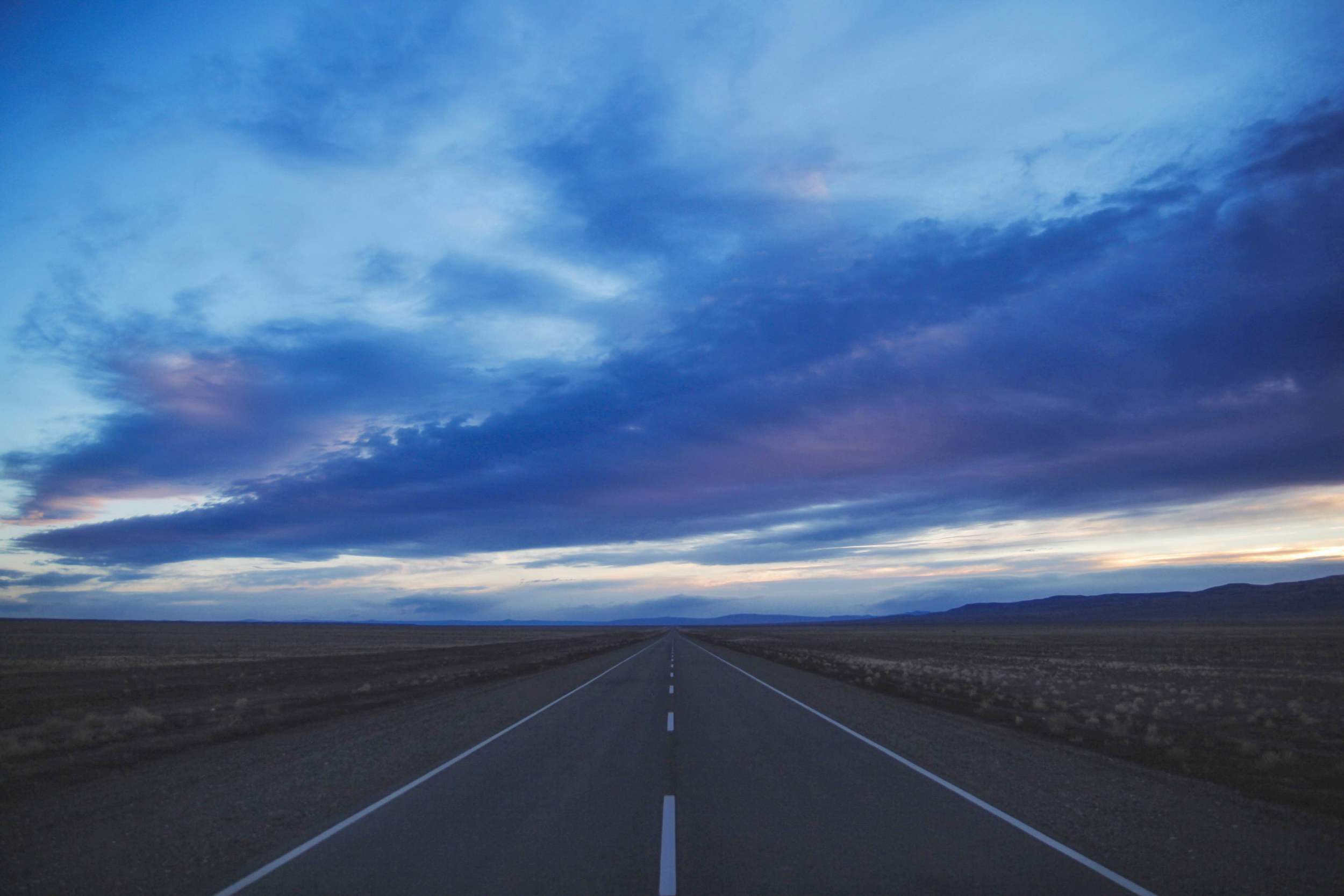
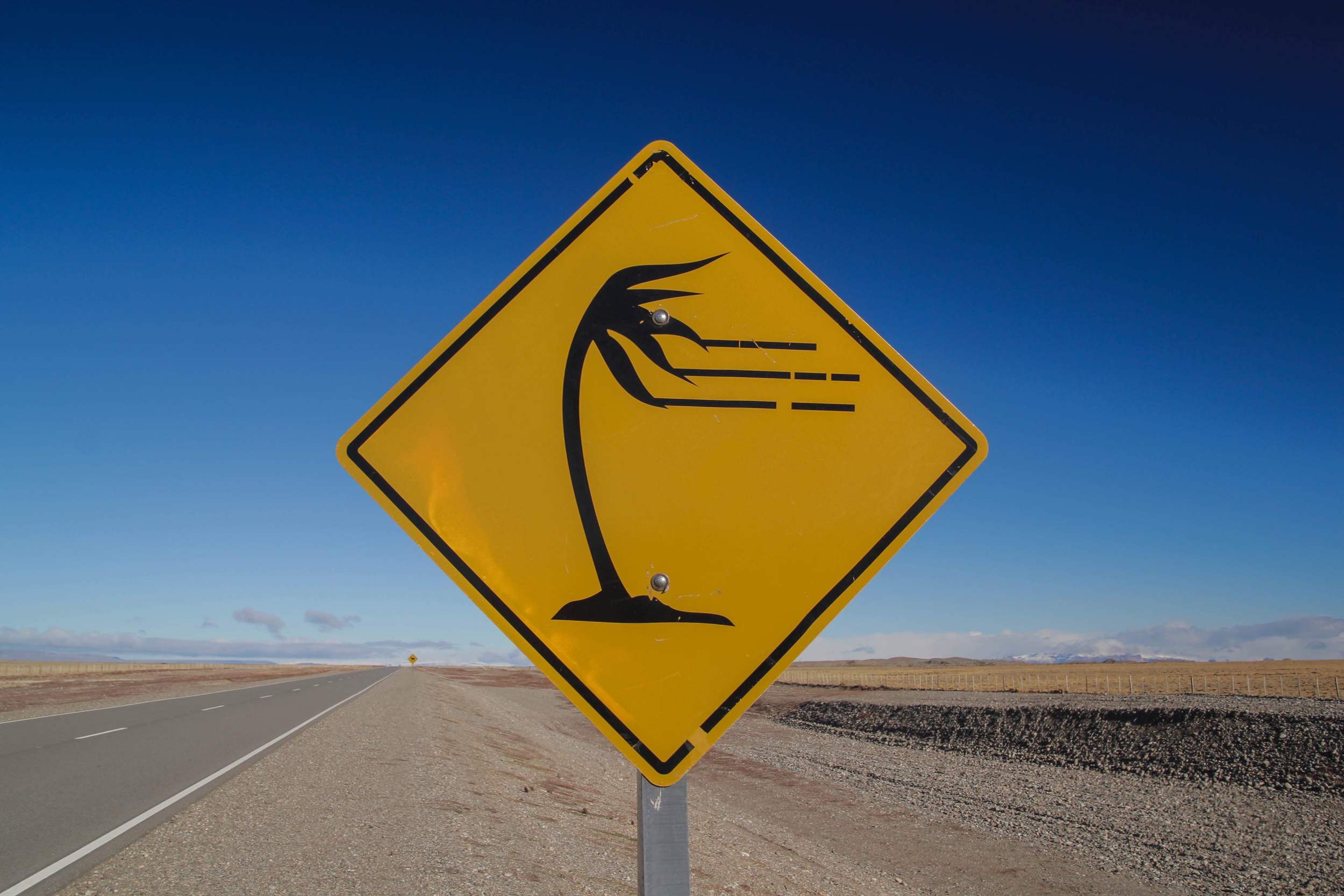

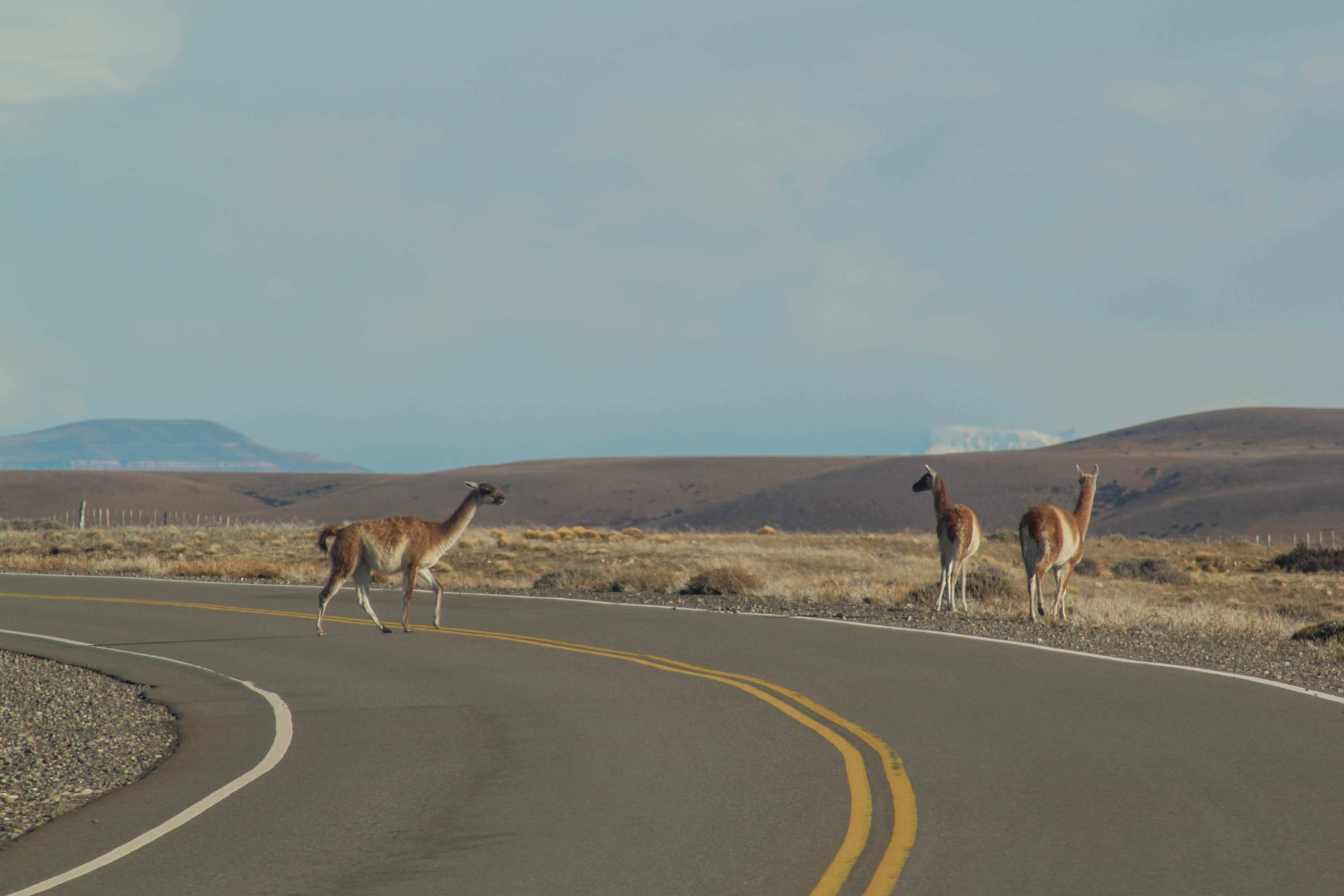
And finally we come to factor # 2: the beautifully jagged peaks of Southern Patagonia .
Our first stop on our Southern Patagonia adventure was El Chalten. A small but artfully designed tourist destination tucked into the valley below the Fitz Roy massif. Our first few days were spent in a constant drizzle and low cloud cover that obscured any hope of seeing the famous peaks. There were day hikes, waterfalls and wild-camps that were equal parts enjoyable but frustrating, because really at the end of the day you just want to see that damn mountain and pretending otherwise in winter weather just isn't going to cut it. For myself at least, Tavi is blessed with a little more patience and possesses a little more Vancouver tolerance for rain.With time slipping through our fingertips and with the pressing knowledge that we still have further south to go, we set out on an overnight hike towards Lago Los Tres in hopes that at some point during the next 24 hours we might get a glimpse.
And we did.
Just as we ascended the most difficult ( and incredibly snowy) leg of the trek. The clouds lifted, the sun peaked through and the Fitz Roy massif reared its granite head, surrounded by colony of impressively sharp shark teeth peaks. The sight is suddenly worth the wet feet, the less than stellar weather and the fact that the wind is blowing the snow into your face is such a strong force it stings.
This idea of the landscape usurping the experience of bad weather followed us South as we continued our adventures. El Calafate greeted us with stormy conditions but the opportunity to witness glacier Perito Moreno was more than enough motivation to persevere. At 250km squared, Perito Moreno is actually one of the smaller glaciers in the Southern Patagonian ice field , however it is large enough to pull a gasp from your lips when you witness the seemingly endless ice jutting out into the lake . The height reaches a whopping 70 meters above the water line and we were informed it dips another 120m below the lake at points. Moreover, it is one of the few glaciers in Patagonia that is not receding, therefore, impressively large chunks break off and crash into the lake with incredible force and noise. A striking phenomenon caused by the newly forming ice pushing forward from the back of the glacier. In the middle, the glacier advances up to 2 meters a day- that's over 700 meters year. We marvelled at these facts while on a mini trek on the glacier . The experience was a tad touristy and slow paced, and perhaps we were a bit jaded to the novelty having both walked on glaciers before- however the sheer size of the beast was enough to render us speechless and forgive the cumbersome pace of our 20 person "trek".
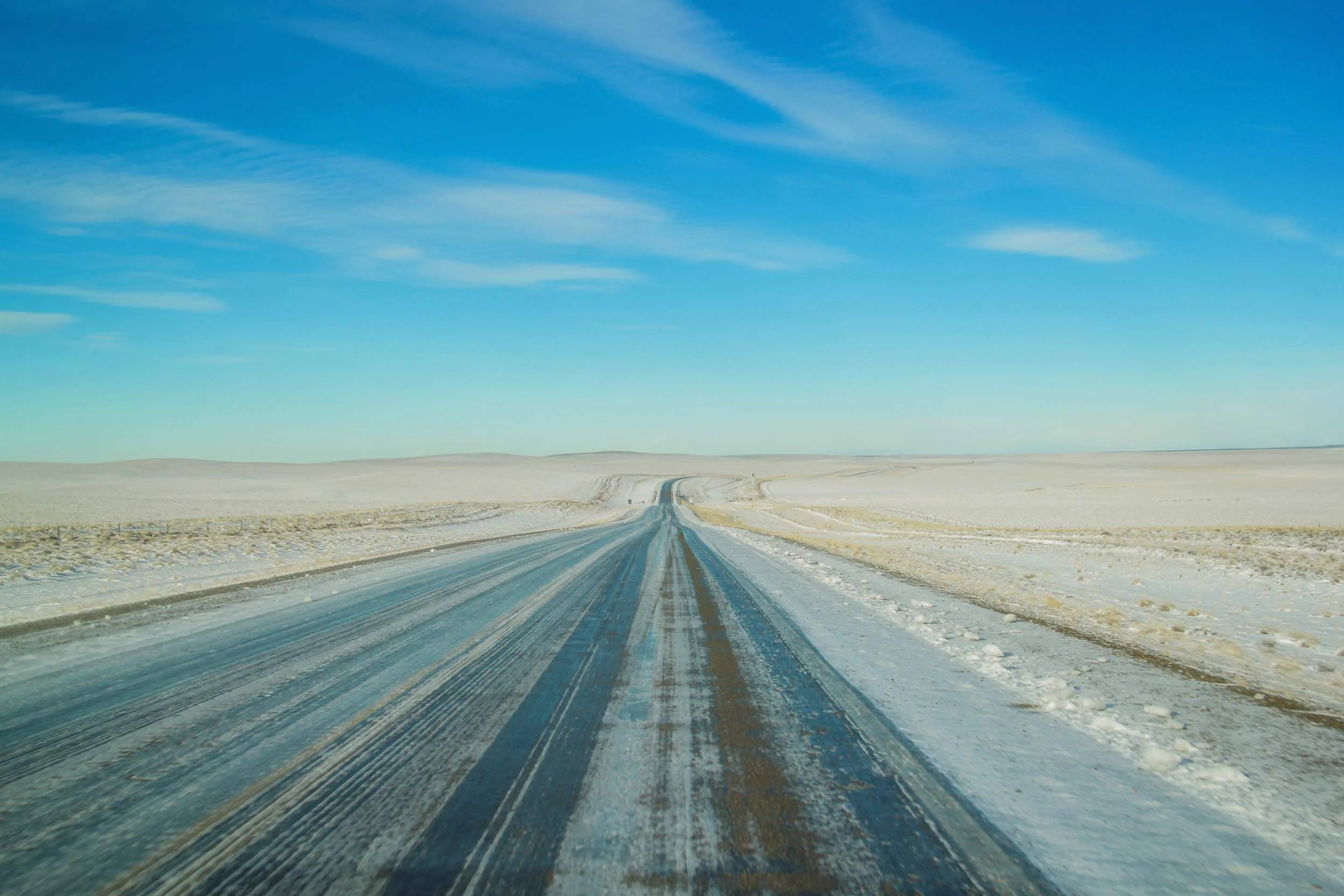
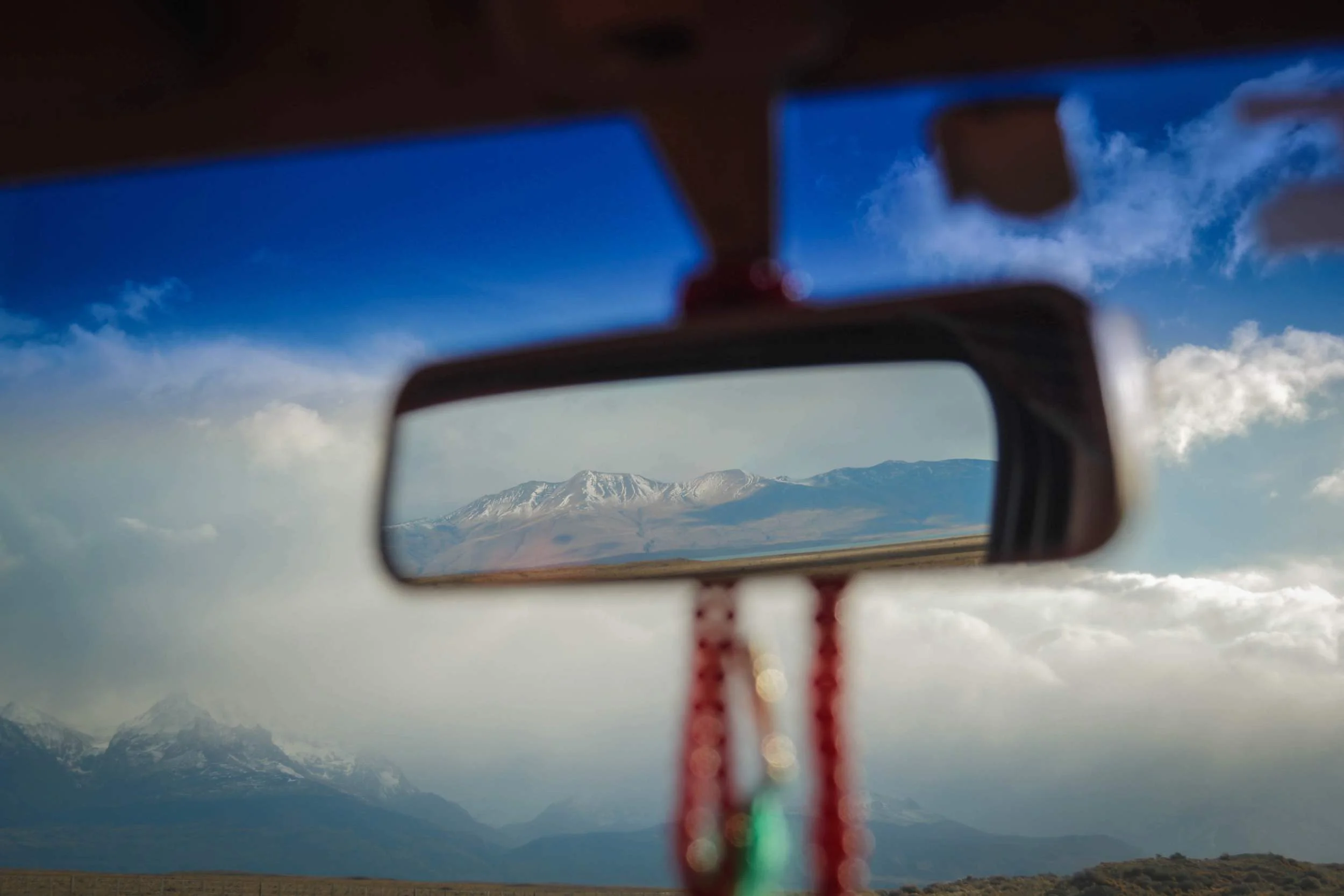
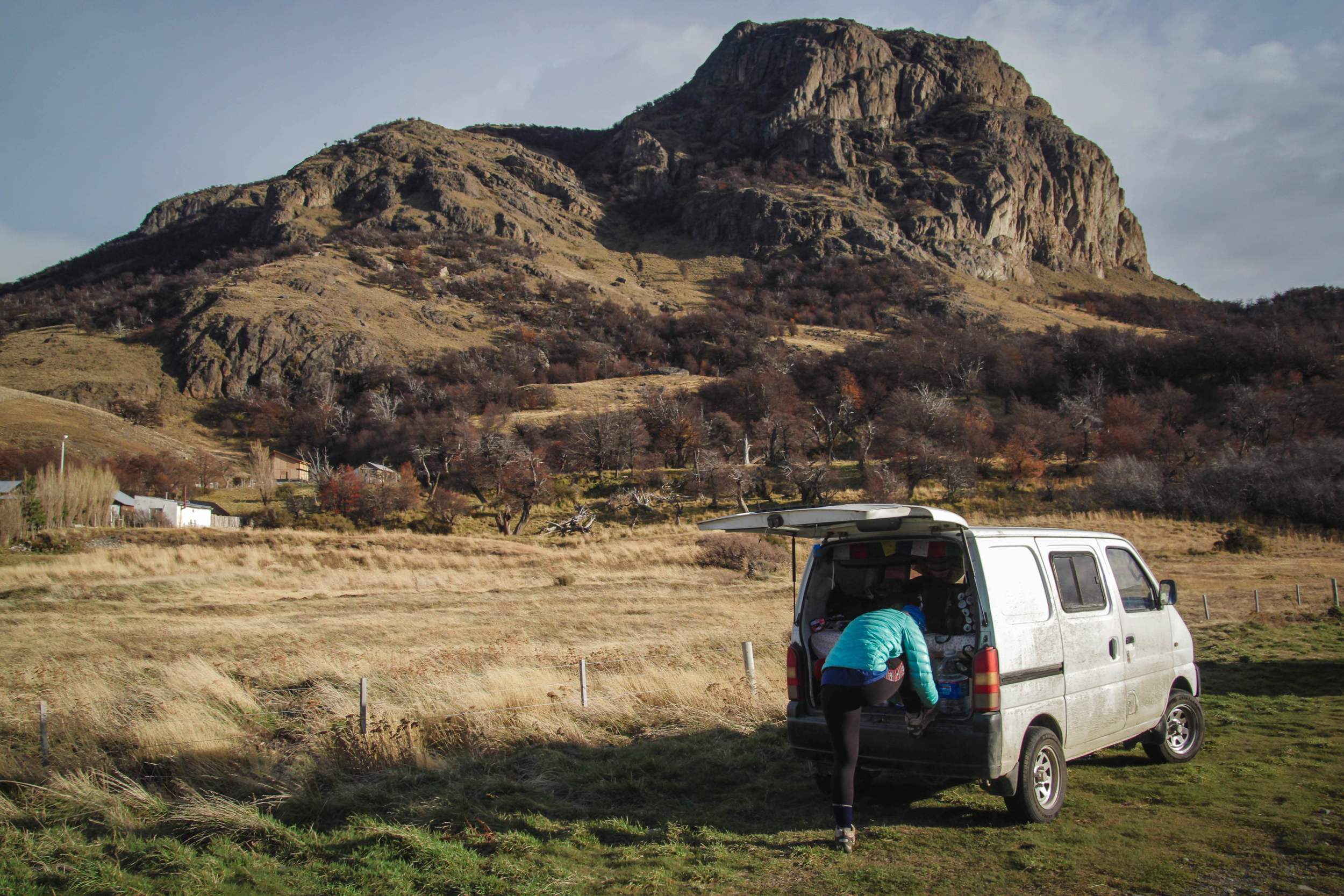
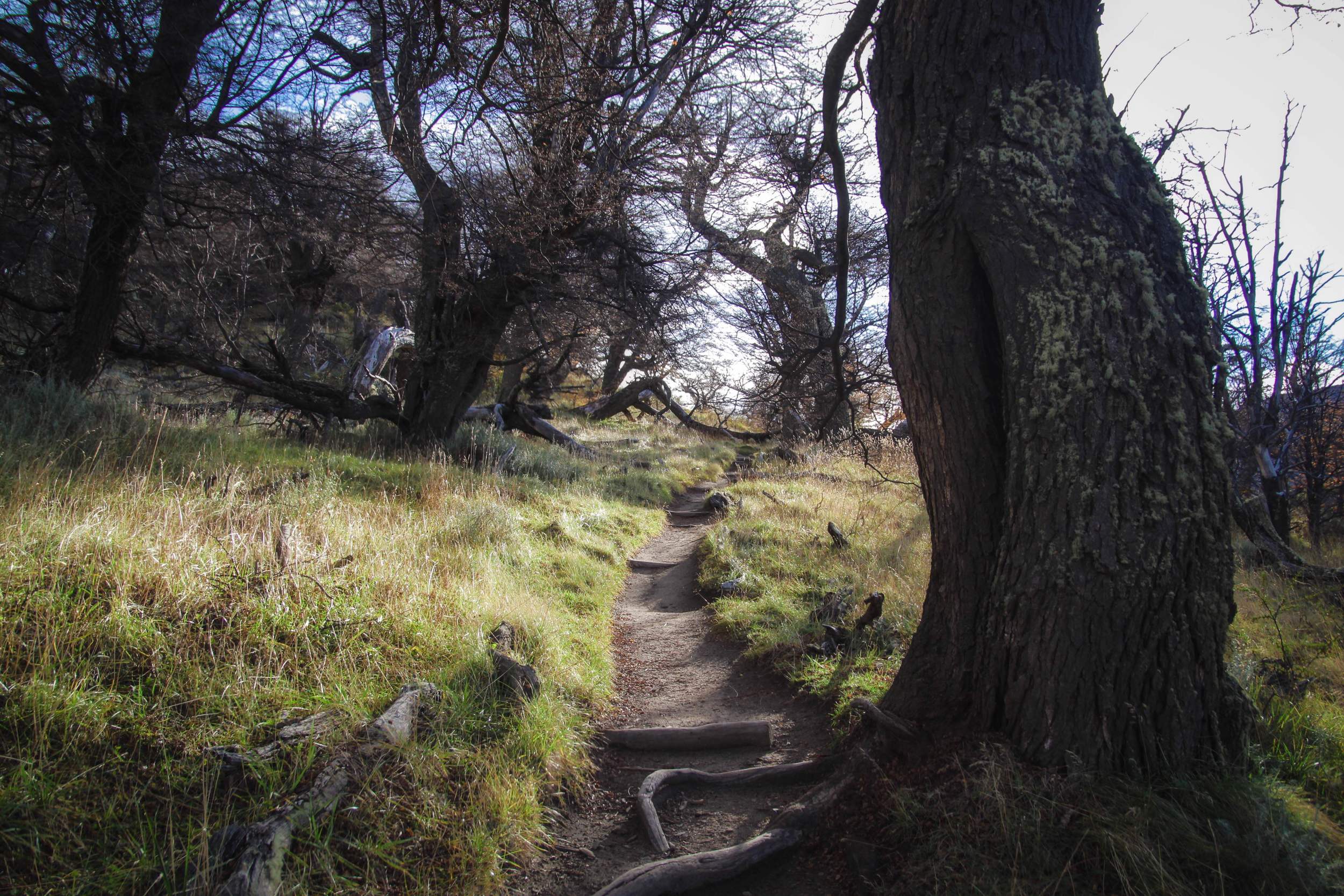

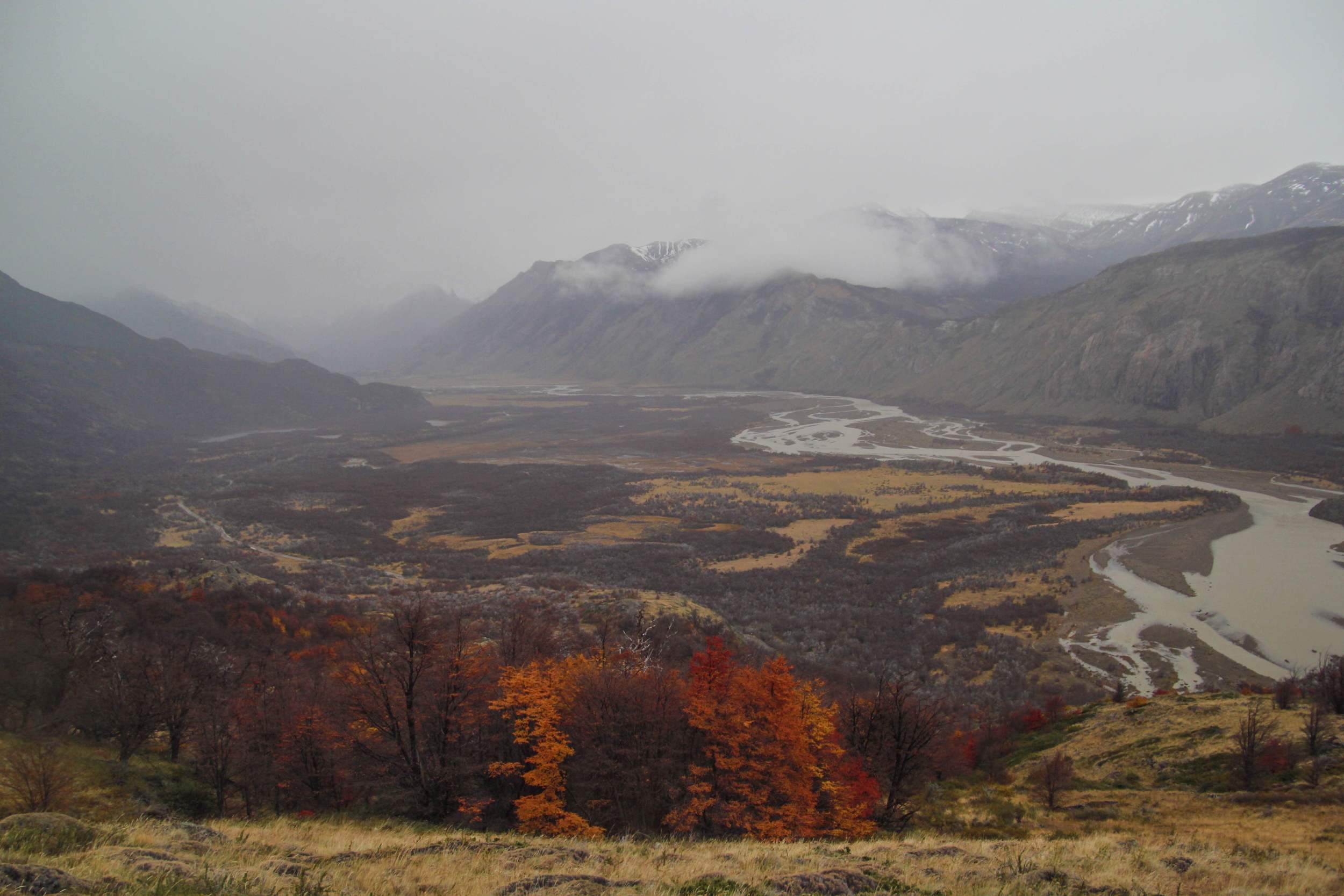

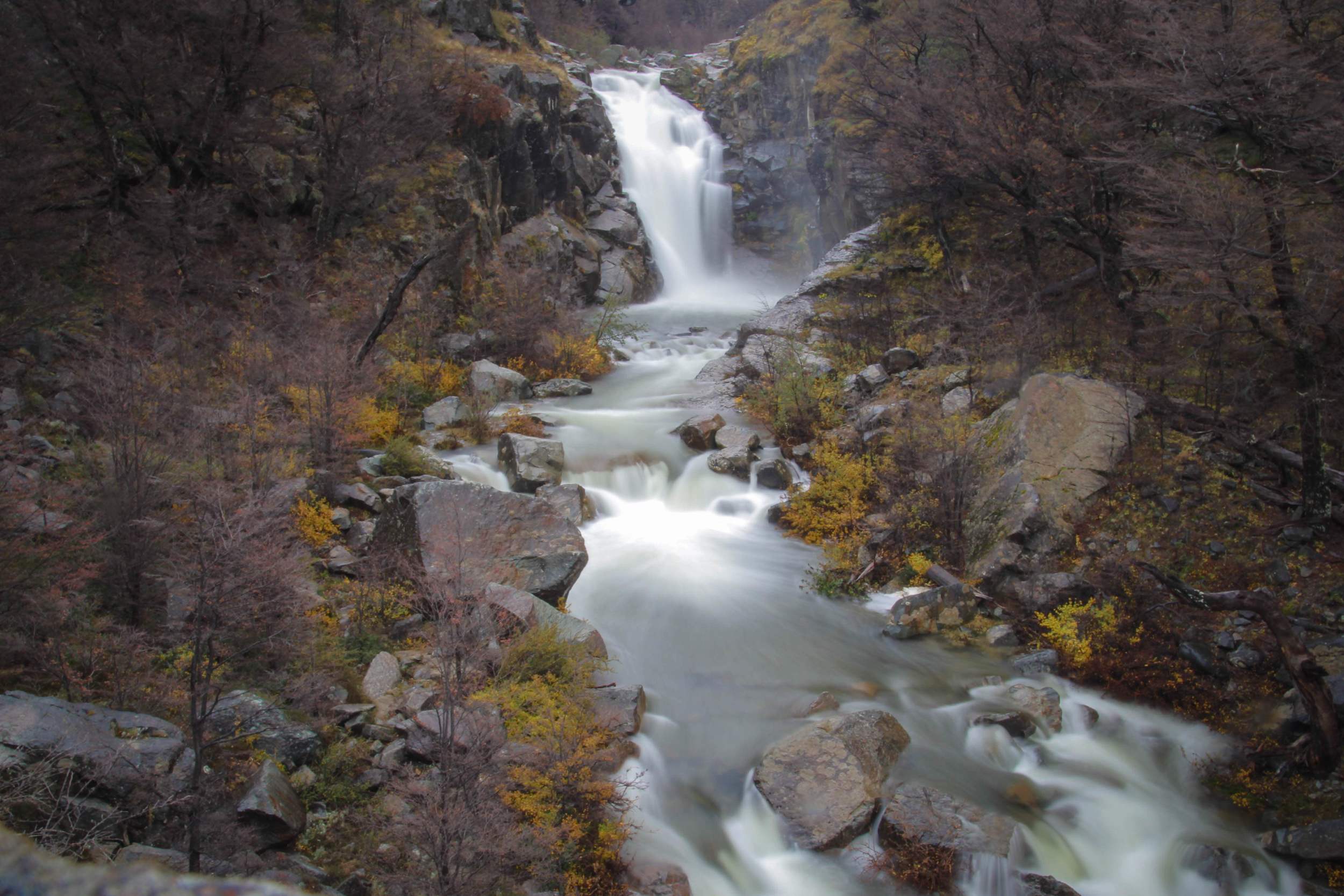



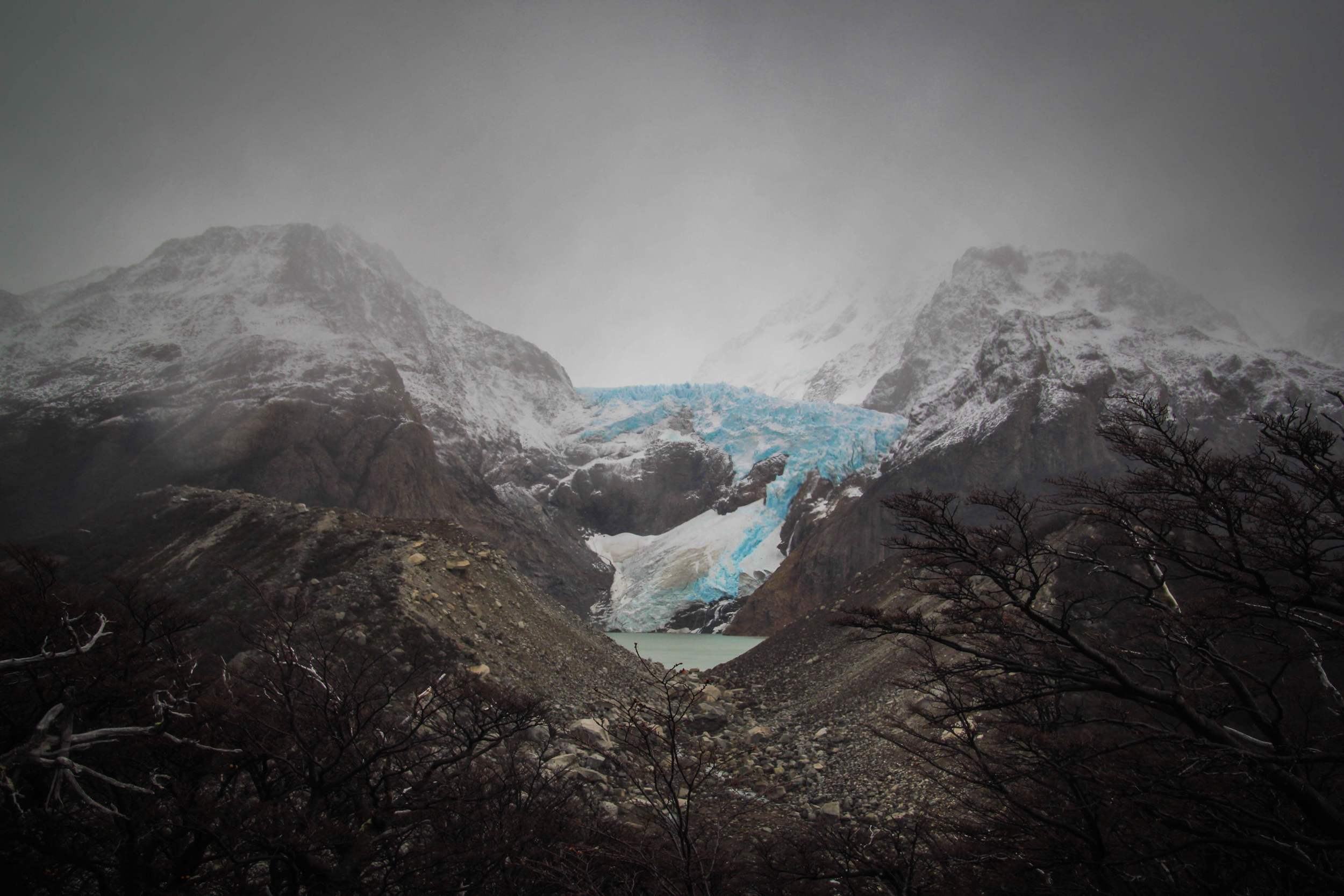
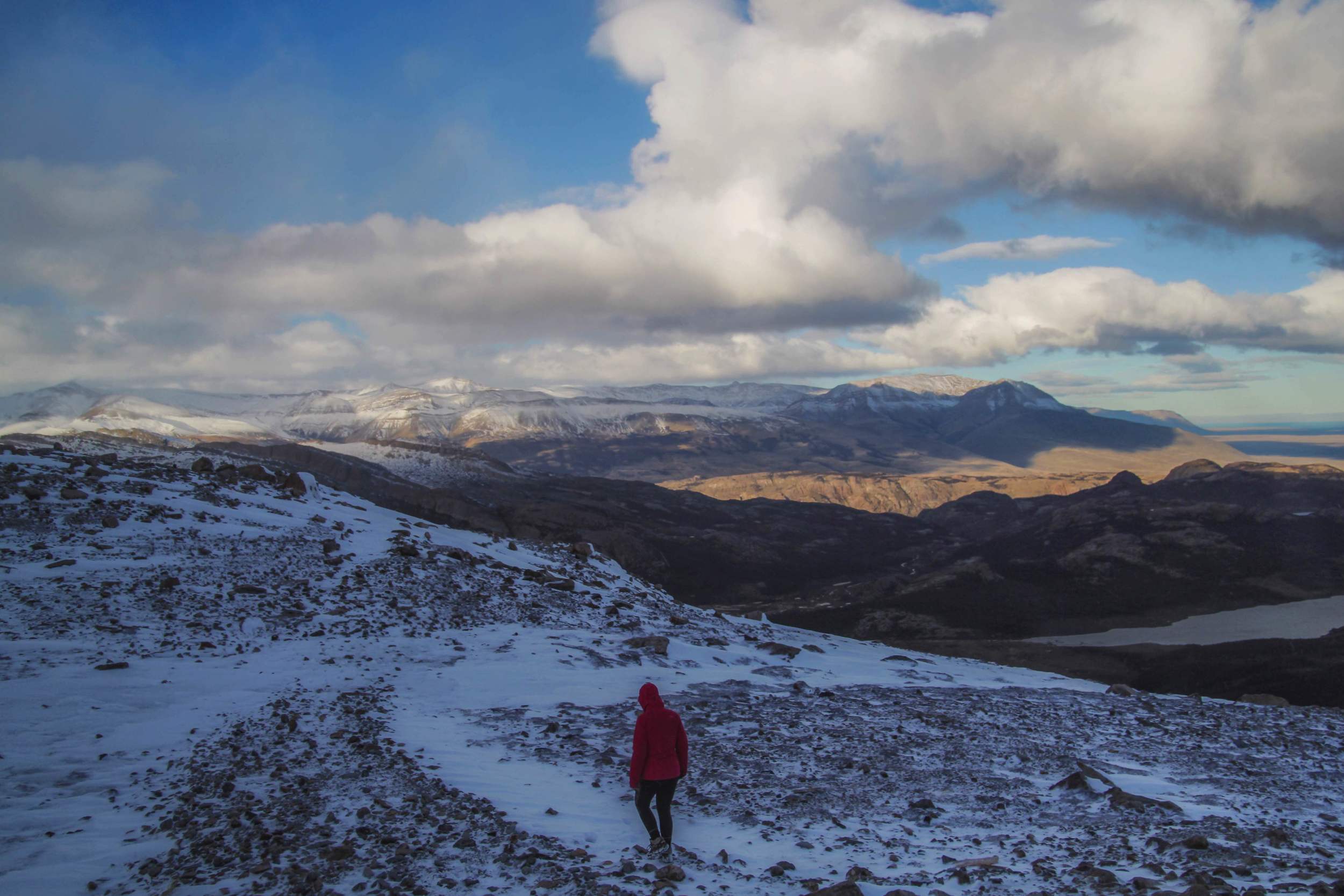


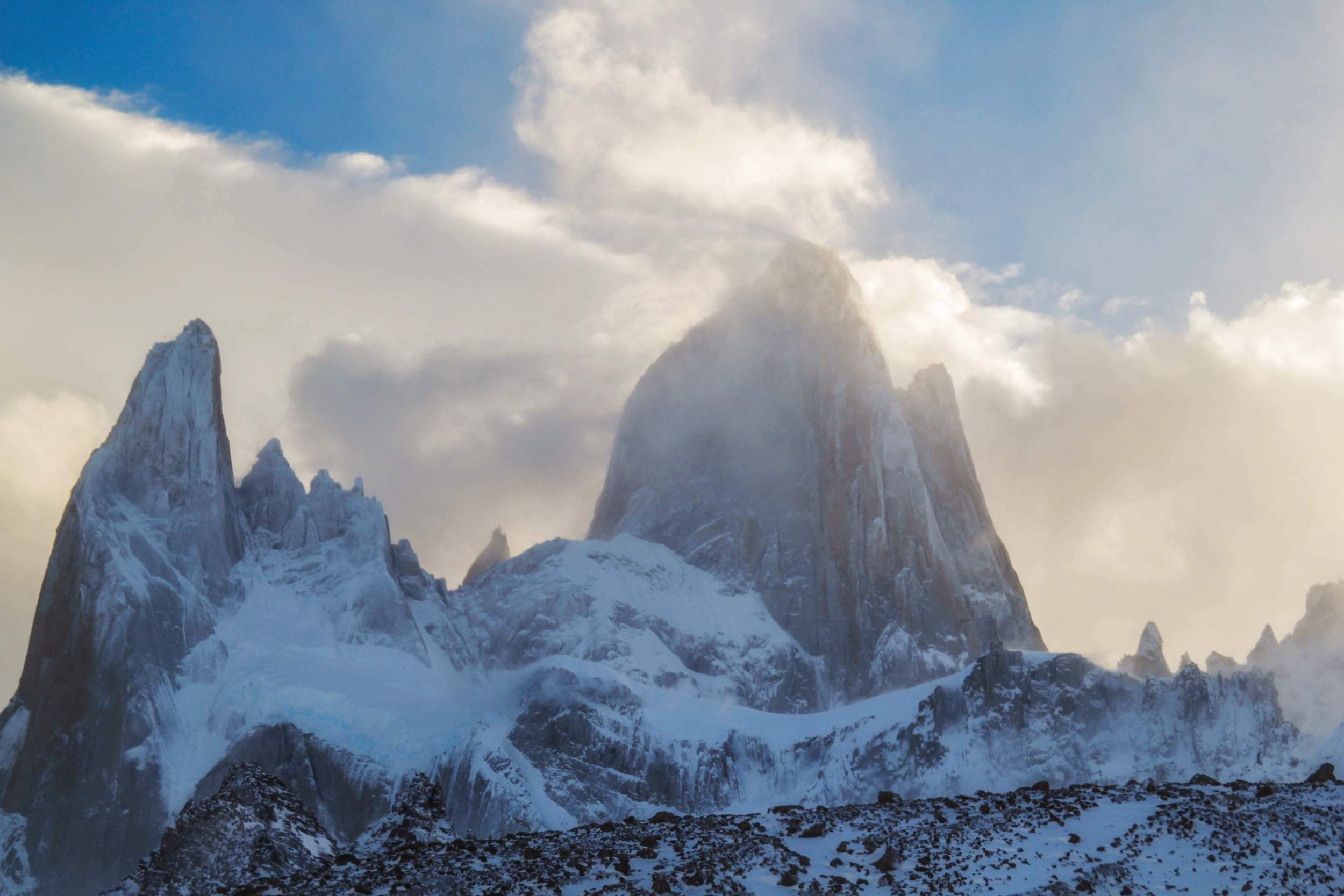
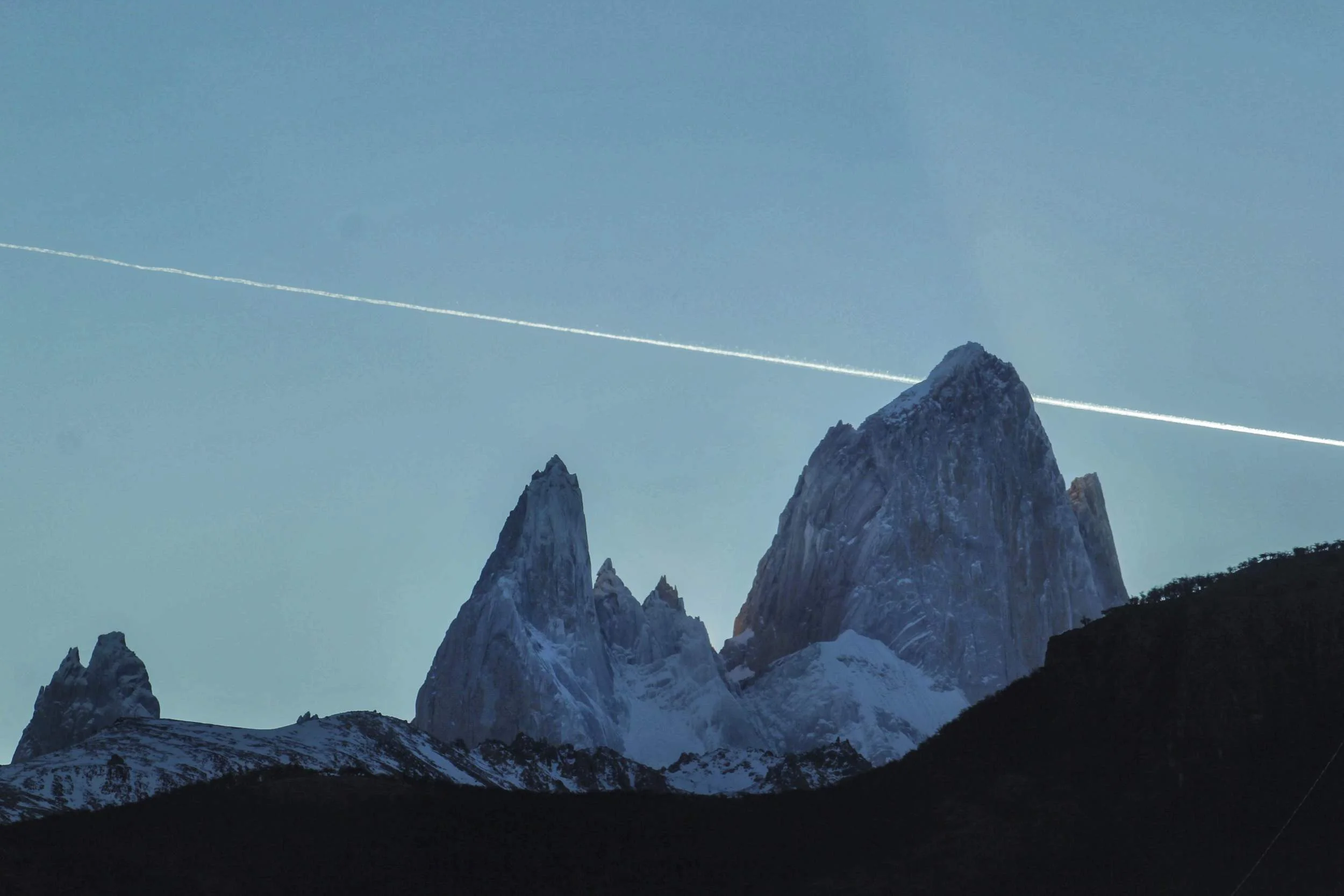
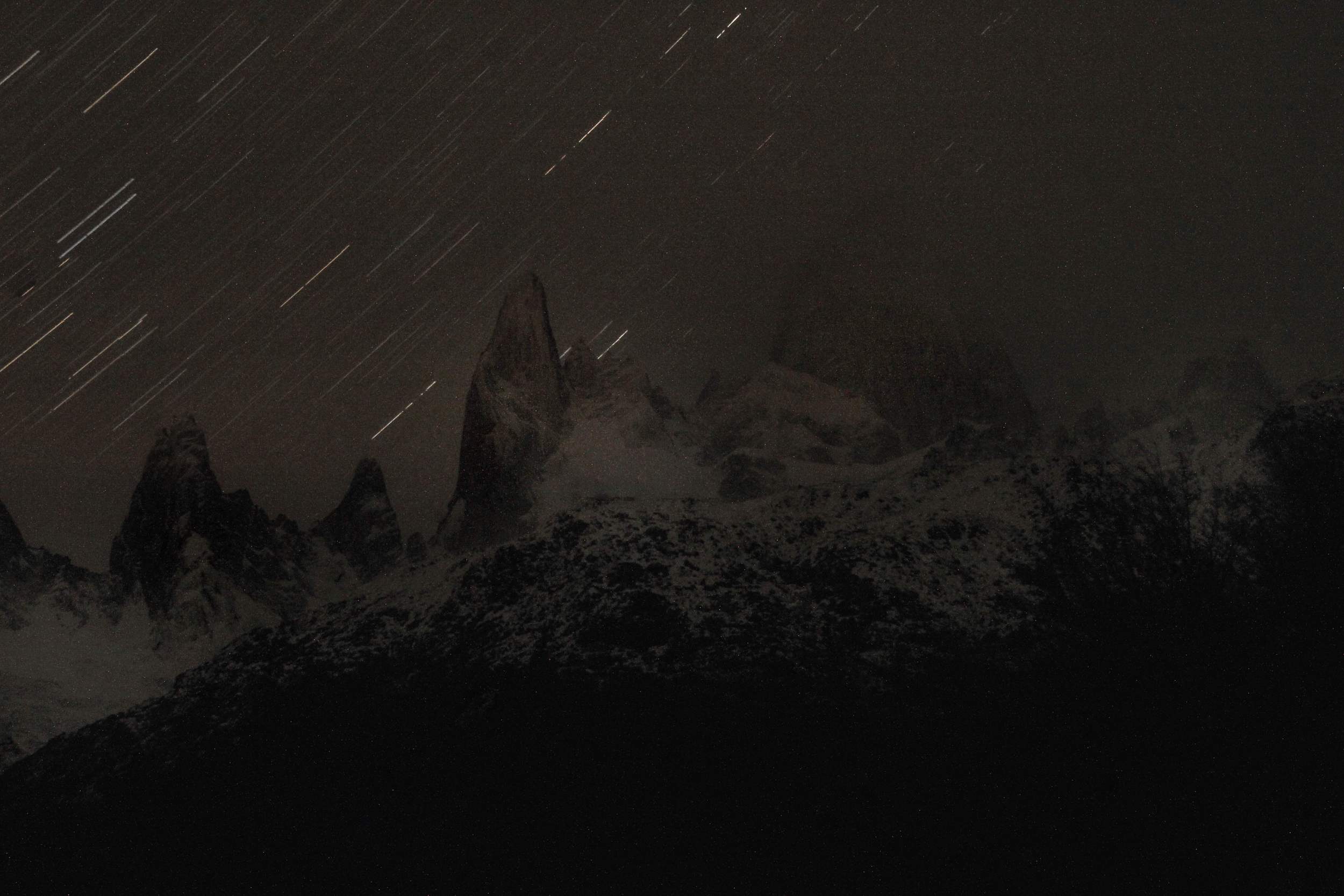
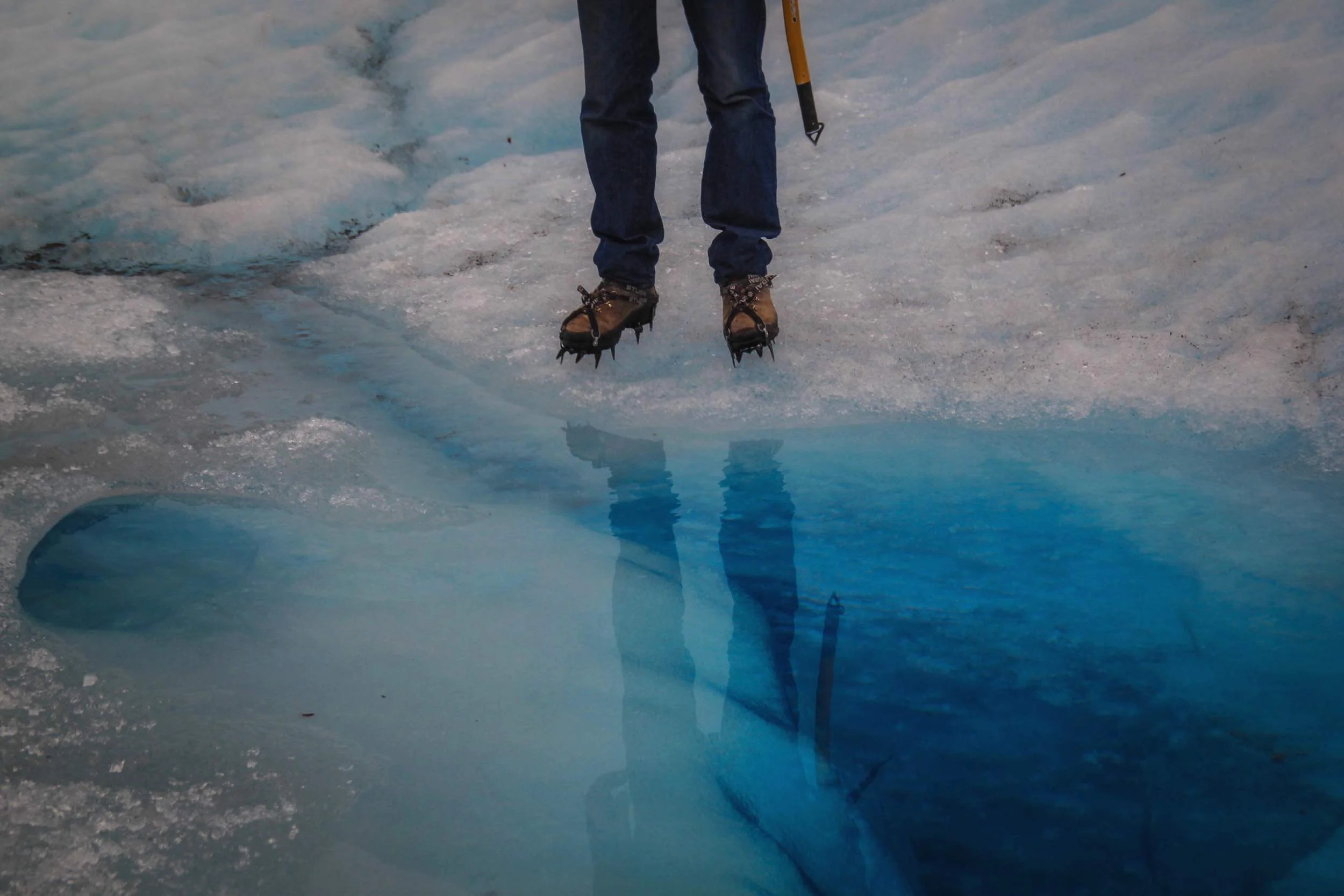
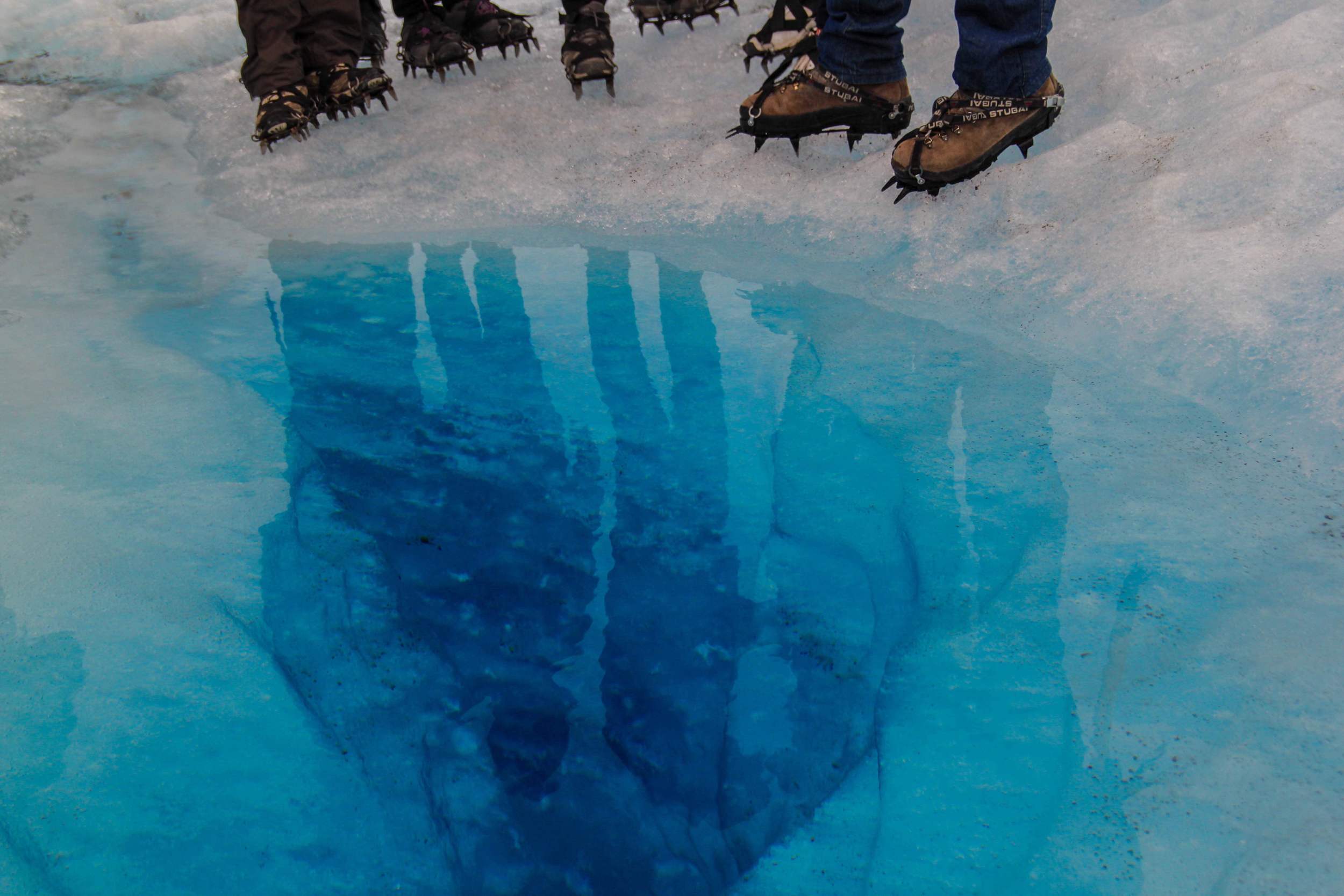

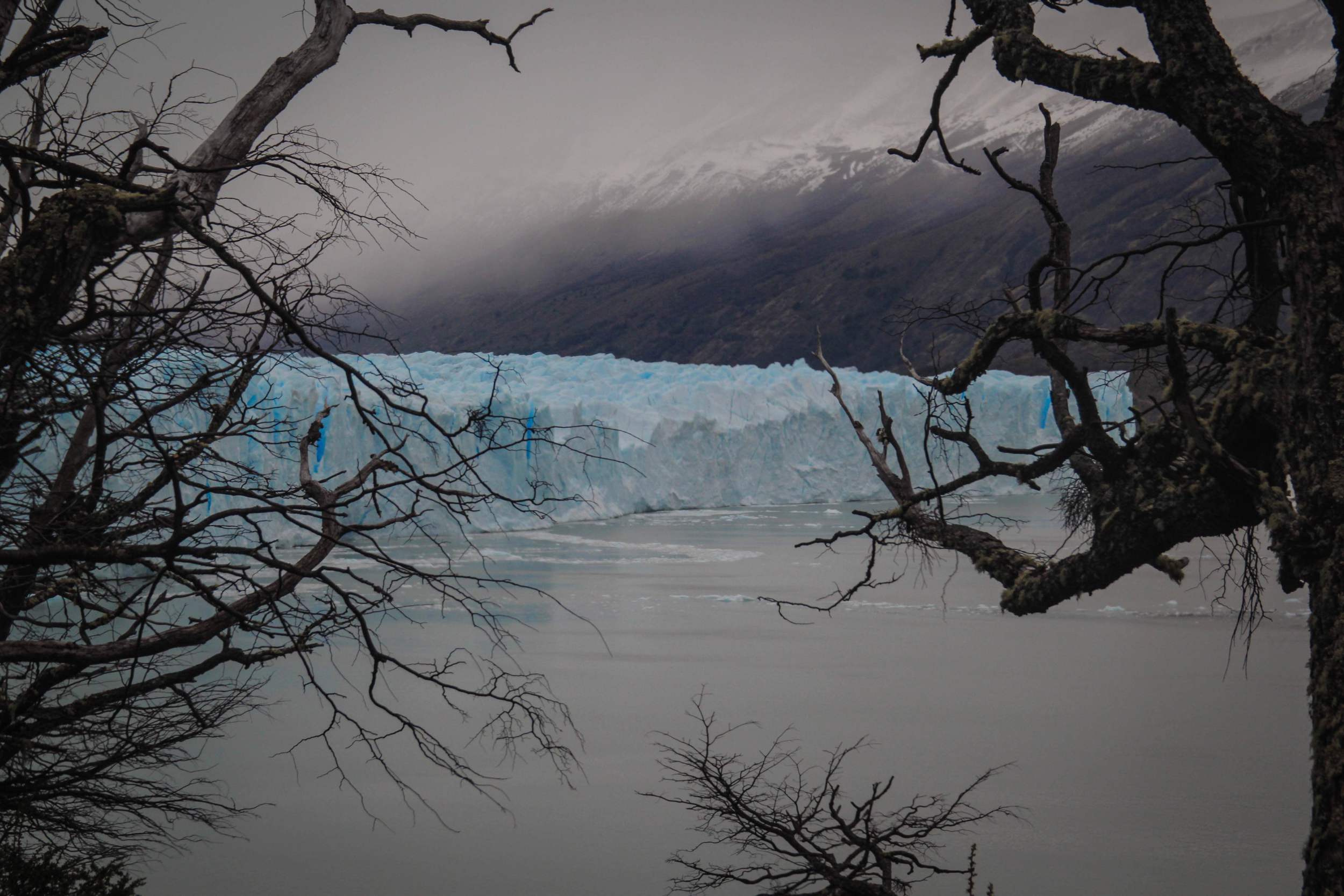
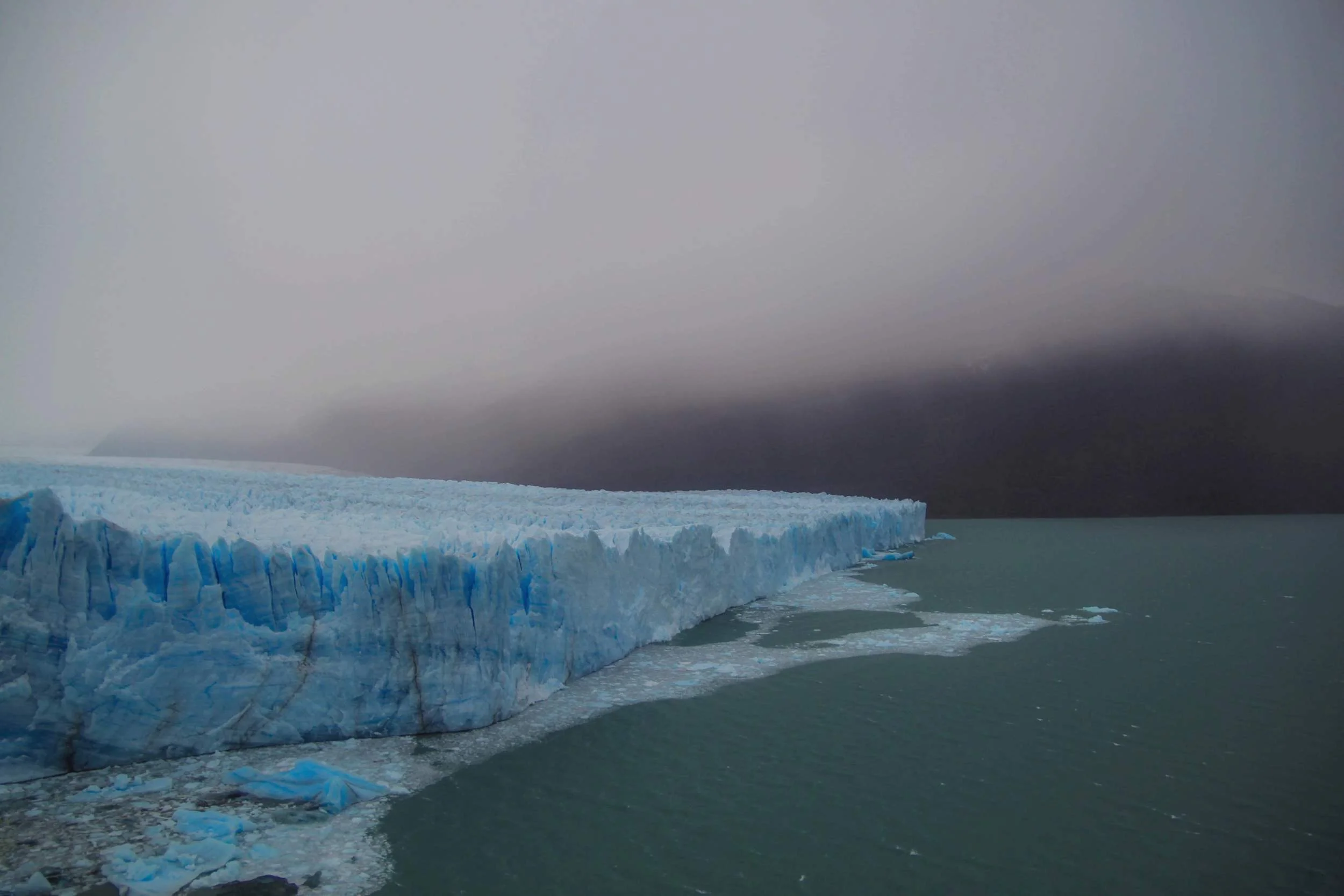
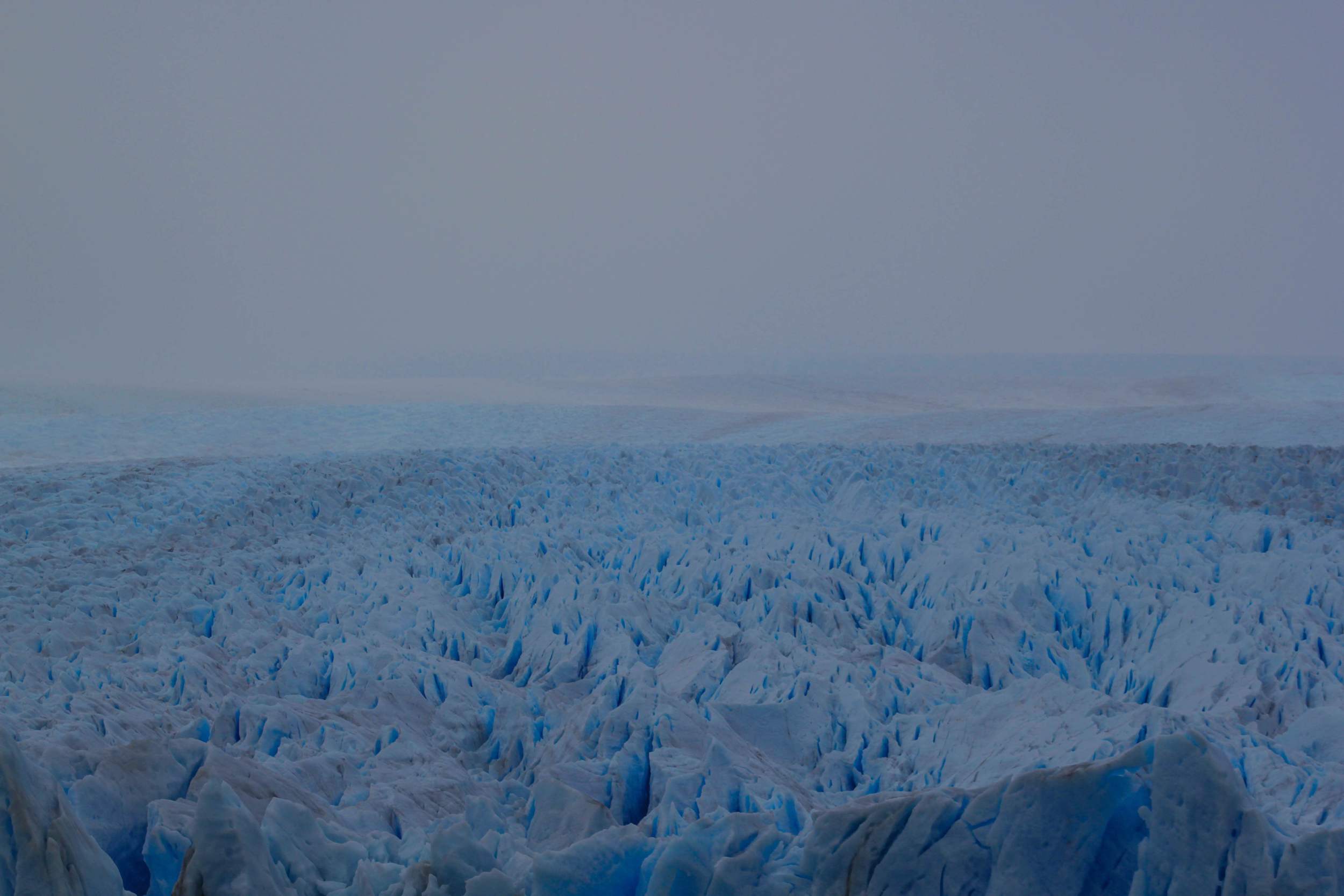
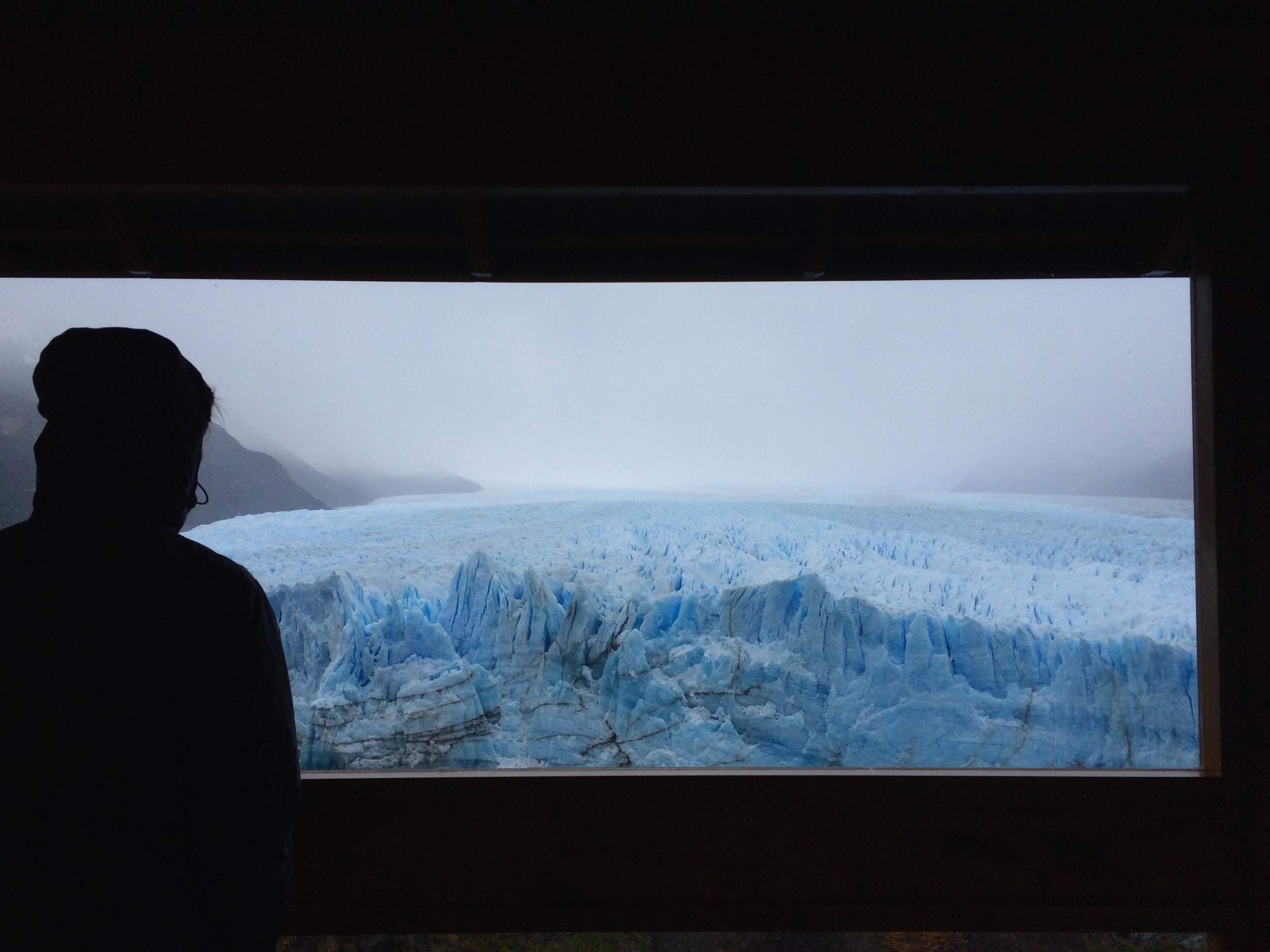
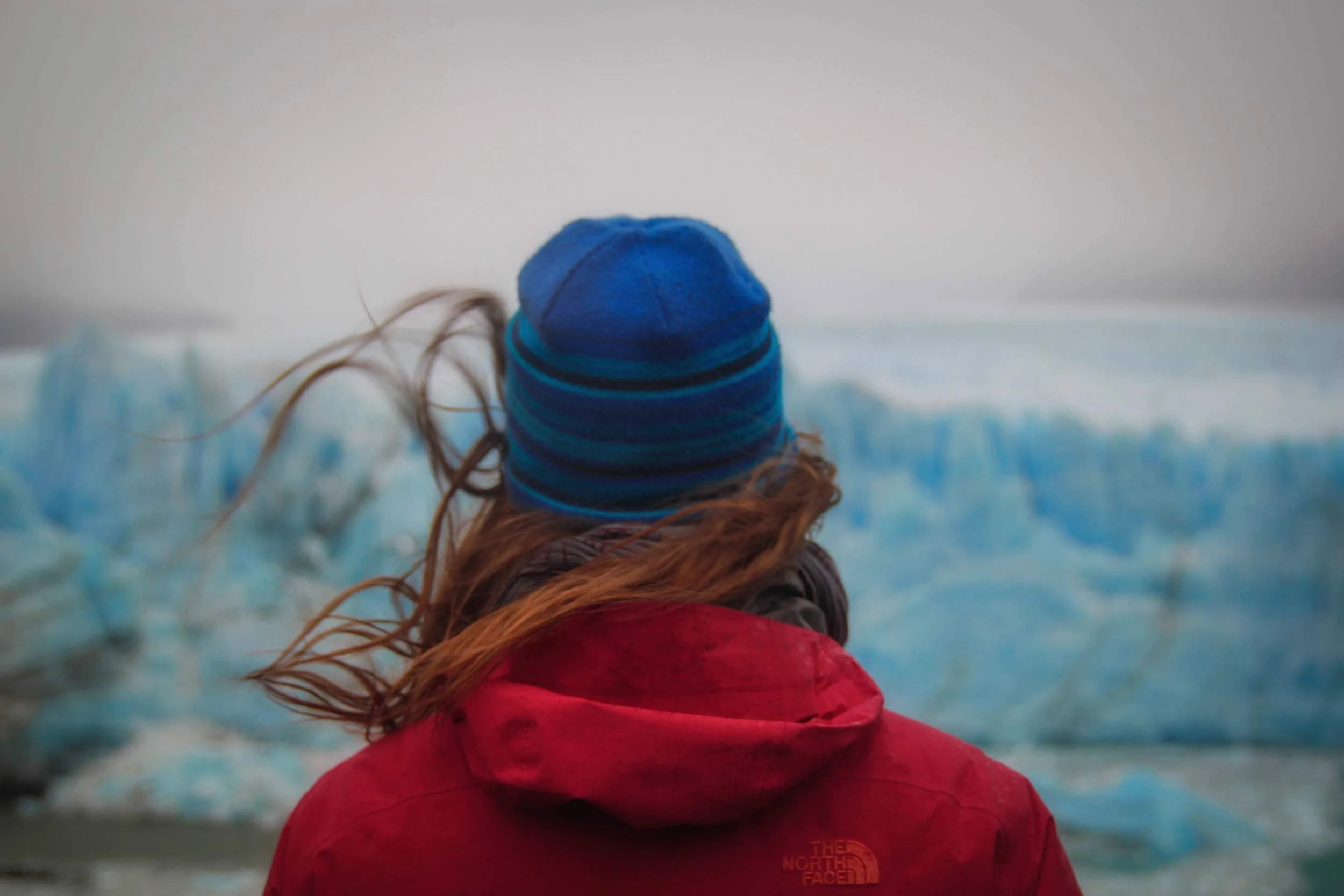
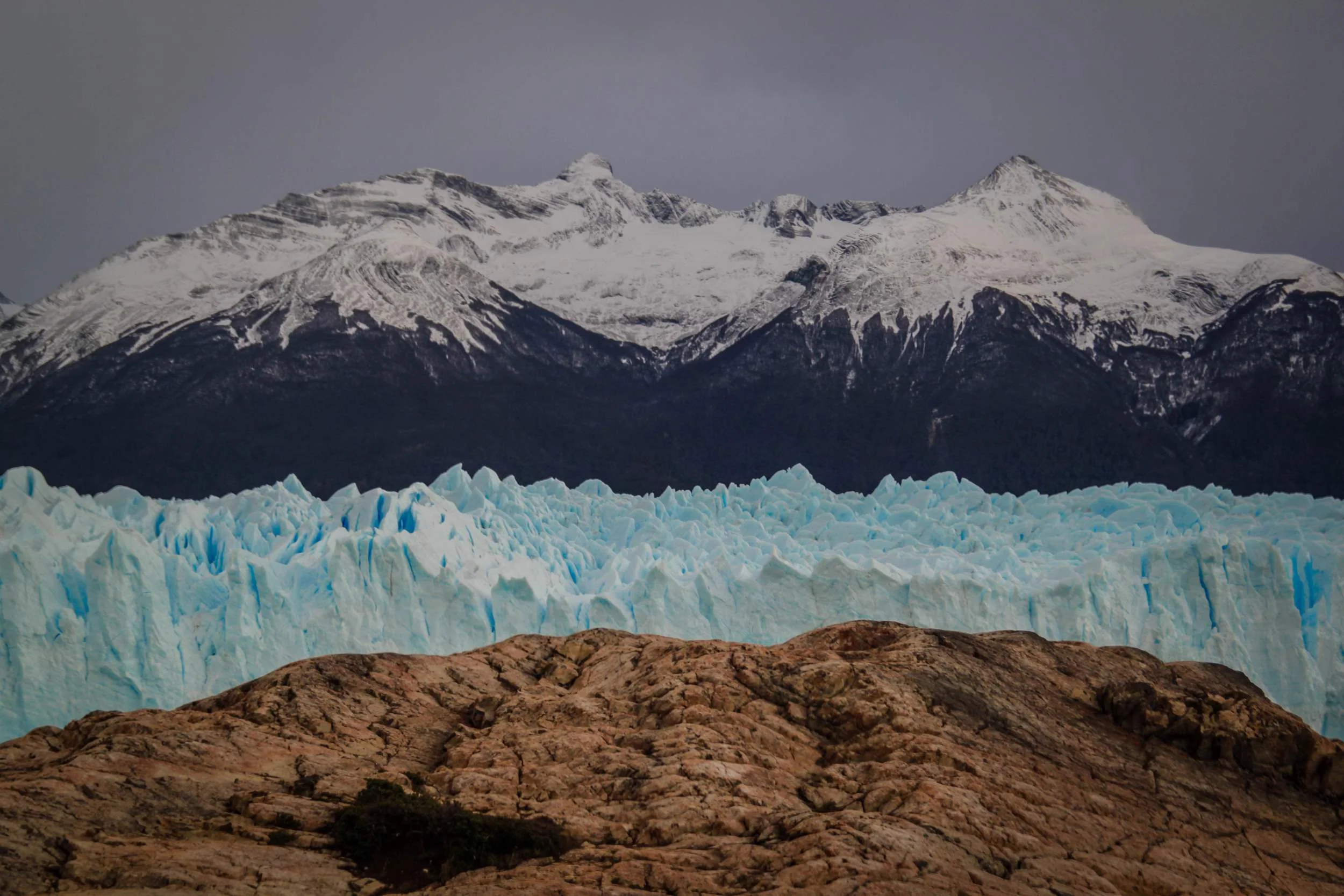
Our final push South found us crossing back into Chile to experience the famously beautiful of Torres Del Paine national park. Luck was on our side weather-wise and the notoriously socked in peaks were perfectly visible practically the whole time. It absolutely pains us that no photos survived this adventure- in our humble oppinion, they were some of the most beautiful we had taken thus far. This was one of the times having a car was an incredible bonus . The park is huge and there are wonderful vantage points that can be found winding through that gravel road that would be missed if you lacked the transportation. Waterfalls, rolling hills, impossibly blue glacier lakes and the impressive rosey granite towers surrounded by black tipped mountains . There is a reason why this park sees more than 150,000 visitors a year - and we were lucky enough to have the park almost entirely to ourselves. Perhaps having our photos stolen is a sign we need to return again.
One photo did survive the theft, not of the towers unfortunately but you can get a sense of the icy blue lakes and the sculptured mountains that comprise the landscape.
I apologize for any typos or if this post is somewhat lacking in structure. Composing on iPhone notes is a tedious and carpal tunnel inducing and other such first world gripes...
Nevertheless, thank you for reading . We did what we could to put this post together . Moreover, we are still pretty dang stoked to be on the road in South America, now we head North to warmer weather.
